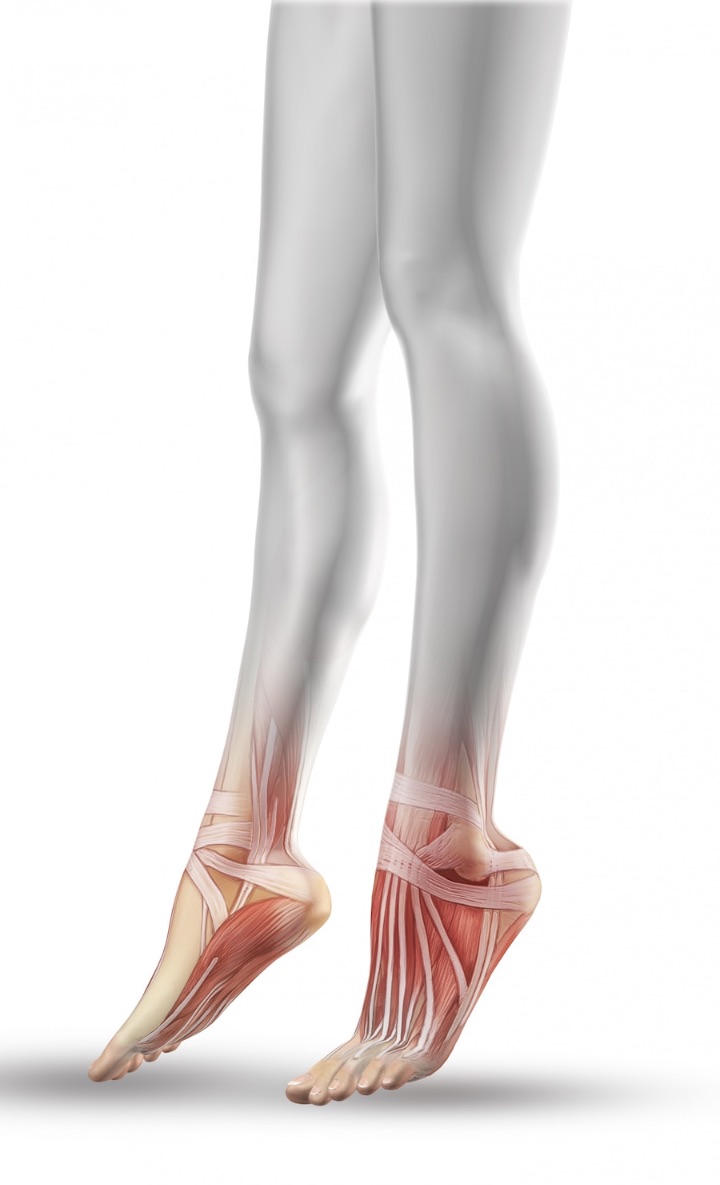The Tibialis Posterior is one of the most critical muscles in the lower leg. Its primary role is to provide stability to the lower limb, support the foot’s arch, and aid in the foot’s various movements. Understanding this muscle’s intricate anatomy and function is vital to maintaining optimal foot health and addressing any potential issues.
The Tibialis Posterior resides in the deepest layer of the posterior compartment of the leg, beneath the calf muscles. It originates from the tibia and fibula bones (hence its name) and extends down, attaching to the bones of the foot via the posterior tibial tendon. This unique positioning allows it to control the foot and ankle significantly.
The tibialis posterior muscle, along with the tibialis anterior and tibialis longus muscles, forms the group of muscles known as the tibialis muscles in the lower leg. The tibialis posterior is located deep within the leg muscle, originating from the tibia and fibula bones, as well as the interosseous membrane.
The muscle then extends downwards and diagonally, crossing behind the medial malleolus and attaching to several structures in the foot. The tibialis posterior muscle has its insertion on several structures in the foot, including the navicular, cuneiform bones, and the bases of the metatarsal bones.

Photo Credit: kjpargeter, Freepik
This intricate structure allows the tibialis posterior surface muscle to function as a powerful plantarflexor and invertor of the foot, aiding in walking, running, and maintaining balance. It also provides crucial support to the medial arch of the foot, contributing to its overall stability and shock absorption capabilities.
This muscle has several key functions related to foot movement and stability:
When the Posterior Tibialis muscle doesn’t function properly, it can lead to several issues:
Understanding the anatomy and function of the muscle can help identify potential problems and seek early intervention. Regular strengthening exercises can maintain muscle health, while prompt attention to any discomfort can prevent long-term damage. Always consult a healthcare professional if you experience persistent pain or discomfort.
If you’re experiencing pain often in the back of the muscles of the leg and around the foot at the ankle, it could be a symptom of posterior tibialis dysfunction. Other symptoms include medial foot pain, tendon injury, ankle sprain, and ankle joint instability. Pain may be dull or sharp, depending on the severity of the injury.

Photo Credit: stefamerpik, Freepik
In some cases, swelling and tenderness can also occur near the affected area. You may have difficulty standing for long periods due to increased pain levels or an inability to bear weight on the affected foot. If you’re experiencing any of these symptoms, contact a medical professional as soon as possible for a proper diagnosis and treatment plan.
Injuries to the tibialis posterior, including tendonitis and strain, can cause pain and instability in the lower leg. Common injuries include:
Treating tibialis posterior injuries often involves rest, anti-inflammatories, ankle bracing for support, and physical therapy exercises to rehabilitate the lower leg. For severe cases, orthopedic therapy may be prescribed.
Physical therapists can assess the injury and determine a plan that best suits the individual’s needs. They’ll likely suggest strengthening exercises of the leg muscles to help stabilise the ankle joint and stretching exercises to improve the ankle’s range of motion. Rehabilitation exercises should be done regularly to ensure proper healing.

Photo Credit: pvproductions, Freepik
Surgery may be necessary in some cases if there’s an extensive tear or rupture of the tendon or ligament. Recovery time following surgery may take several weeks, with physical therapy being used as part of rehabilitation for a full recovery.
Rehabilitation exercises can help strengthen the calf muscles and improve the range of motion to aid in recovery from tibialis posterior injuries. Ankle exercises, such as dorsiflexion, eversion, and plantar flexion, are crucial for restoring muscle strength in patients with musculoskeletal disorders or tibialis posterior dysfunction.
The patient should begin with light stretching exercises focusing on the ankle joint and gradually increasing intensity over time. Additionally, strengthening exercises for the leg muscles should be included to improve balance and stability. Exercises such as single-leg raises, wall slides, resisted dorsiflexion movement, toe taps, and heel raises will target the tibialis posterior muscle and surrounding structures.
Other activities like walking or swimming may also be beneficial to achieve greater overall mobility. Proper form when performing these exercises is important to ensure safe and effective rehabilitation outcomes.
The Posterior Tibialis plays a key role in foot as well as ankle movements. It primarily enables the foot’s inward movement and downward pointing, helping maintain balance and stability.
Posterior Tibialis Pain Syndrome is a condition often resulting from overuse or injury to the Tibialis Posterior. It presents as pain and swelling on the inside of the foot as well as the ankle and can sometimes lead to a flat foot.
Healing the Posterior Tibialis muscle involves a combination of rest, applying ice to the affected area, taking anti-inflammatory medication, and engaging in targeted rehabilitation exercises tailored to individual needs.
Posterior Tibialis muscle pain is typically caused by overuse, inflammation, or injury to the muscle or tendon. It is often associated with activities that involve intensive foot as well as ankle movements.
The posterior tibialis muscle is a long muscle located in the deep posterior compartment of the lower leg. It originates from the posterior aspect of the interosseous membrane and adjacent bones (tibia and fibula) and inserts onto the navicular bone, the medial cuneiform, and the tuberosity of the navicular bone.

Photo Credit: macniak, Envato
The posterior tibialis muscle is a key flexor and invertor of the foot. Its main function is to help maintain the medial longitudinal arch, provide stability during walking and running, and control the foot’s movement during various activities.
The posterior tibialis muscle is innervated by the tibial nerve, which arises from the sciatic nerve and runs posterior to the medial malleolus.
The tibialis posterior tendon is a strong fibrous cord that runs behind the medial malleolus (ankle bone) and attaches the tibialis posterior muscle to the foot bones.